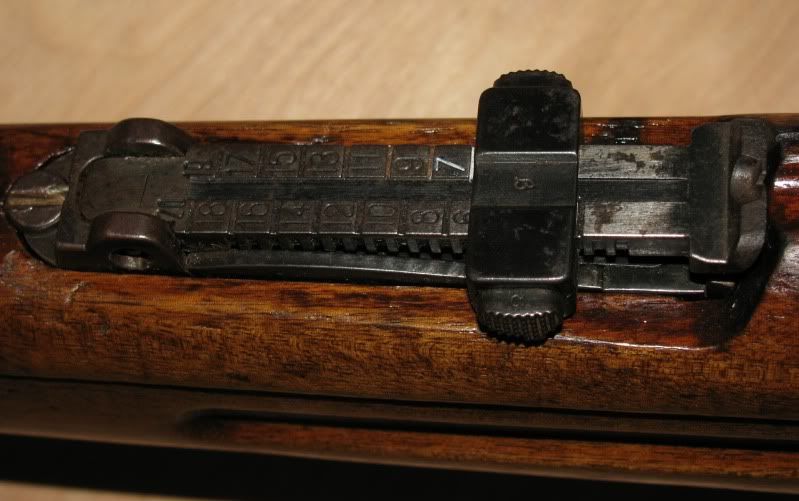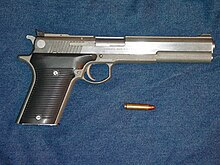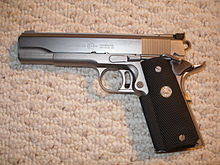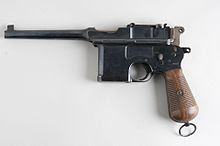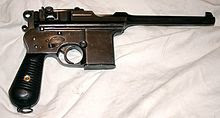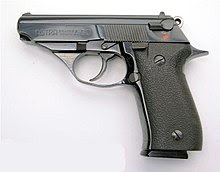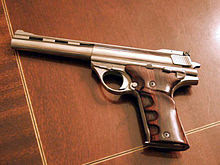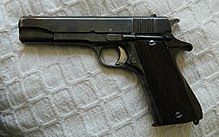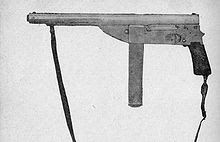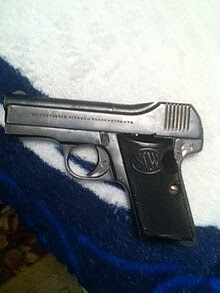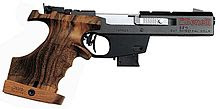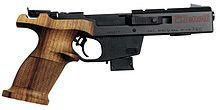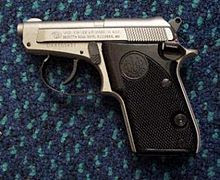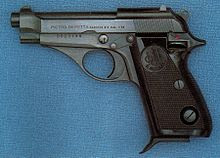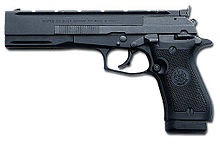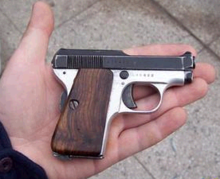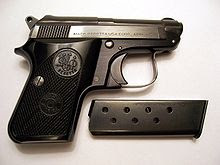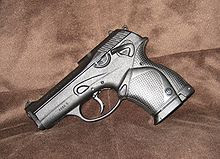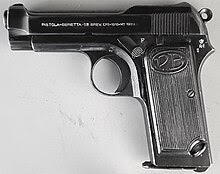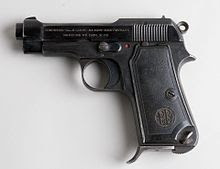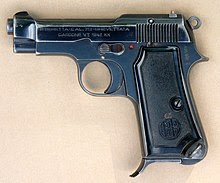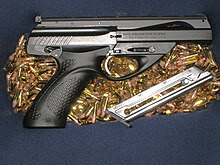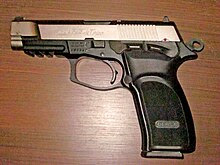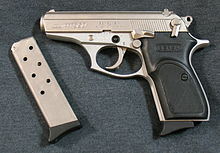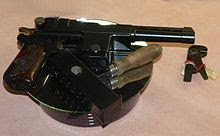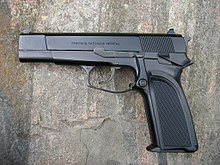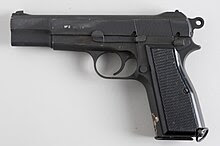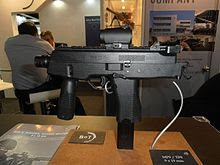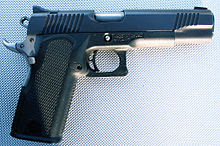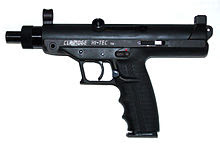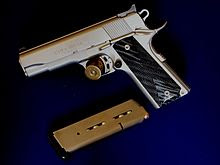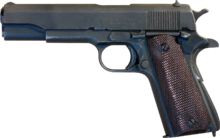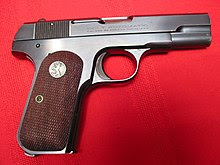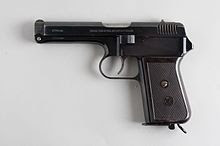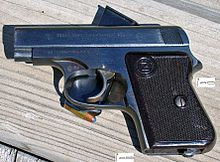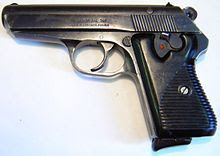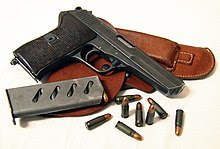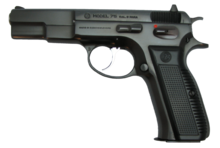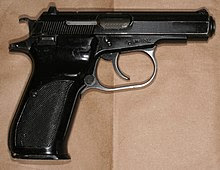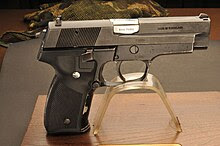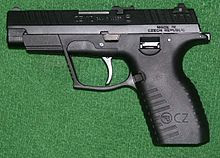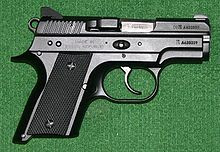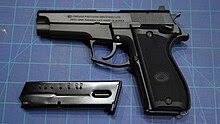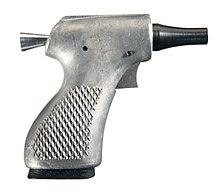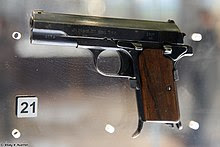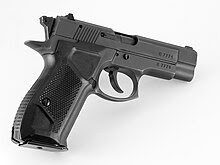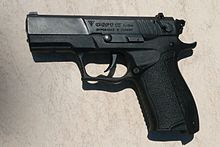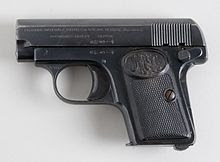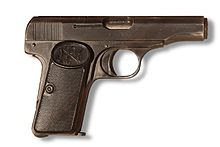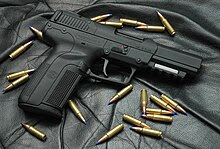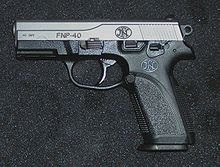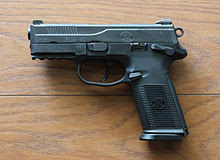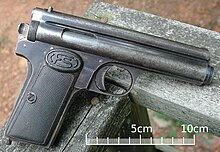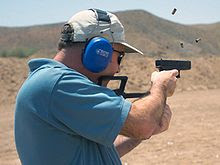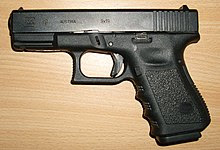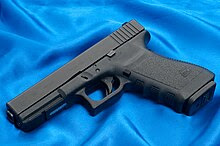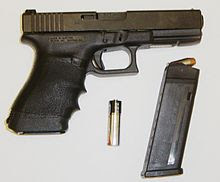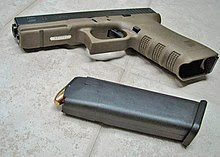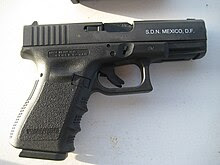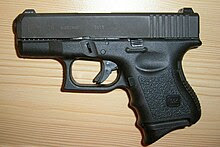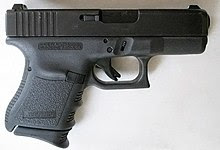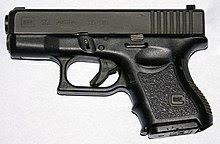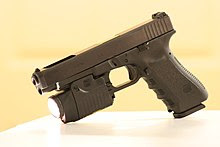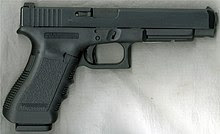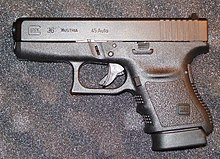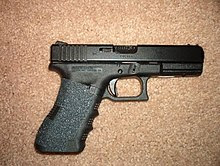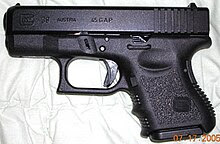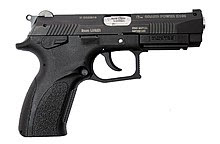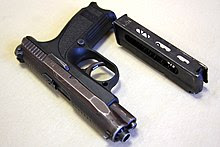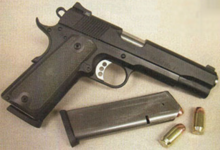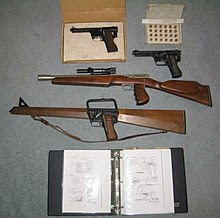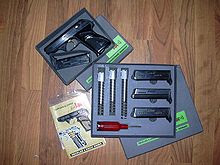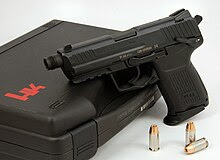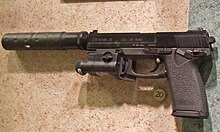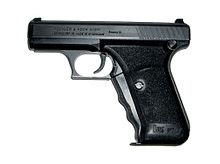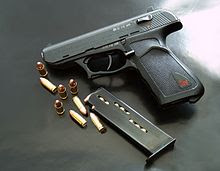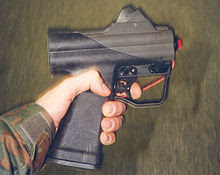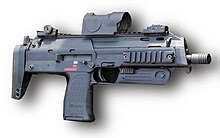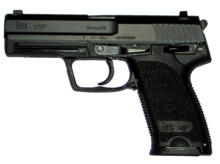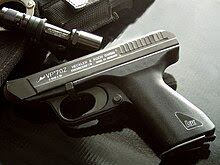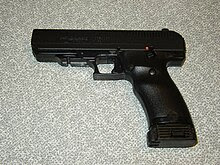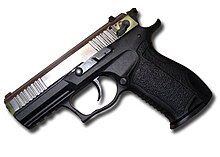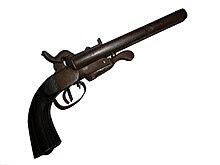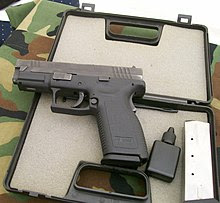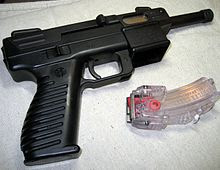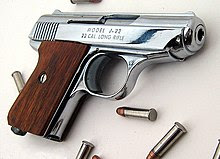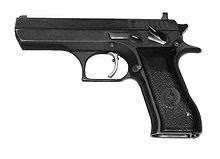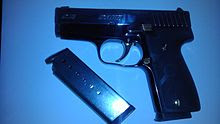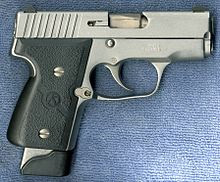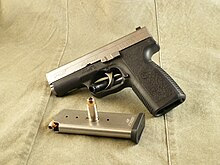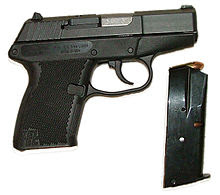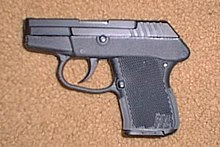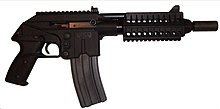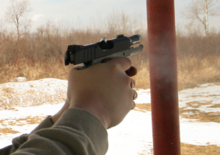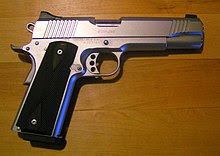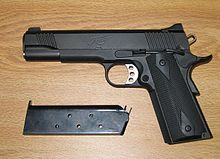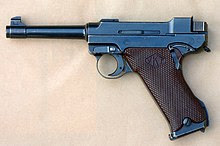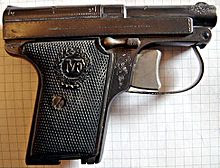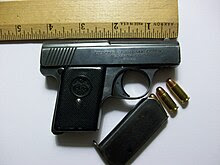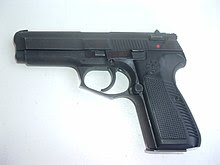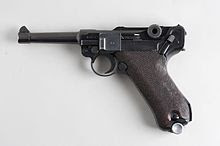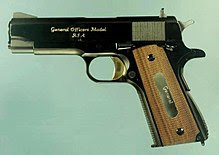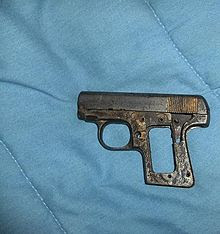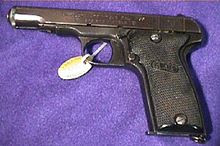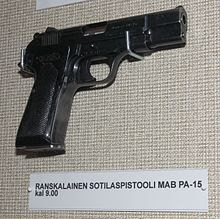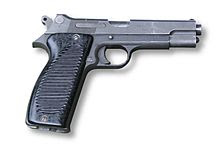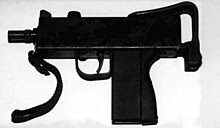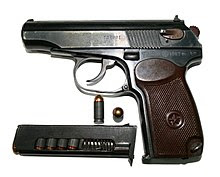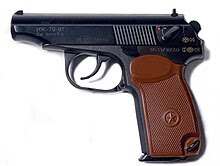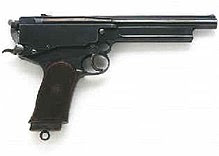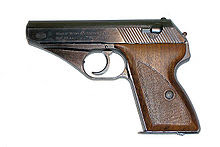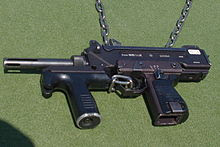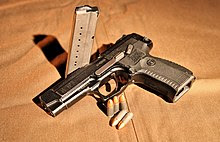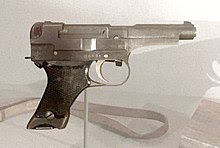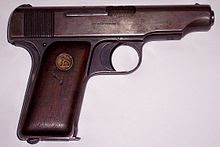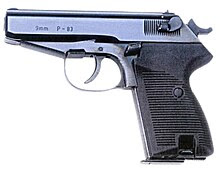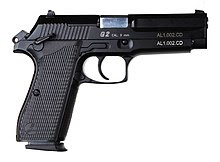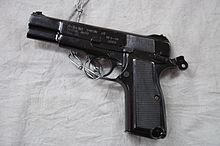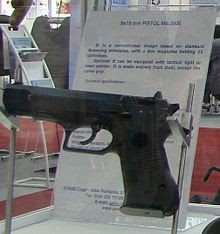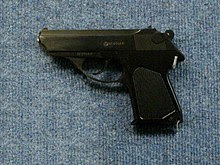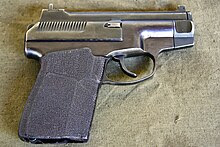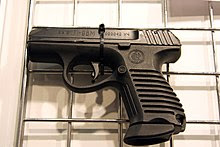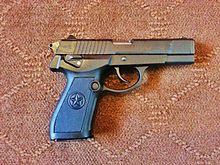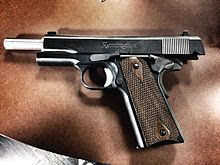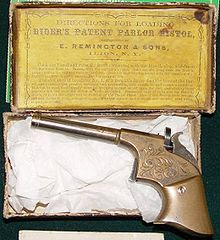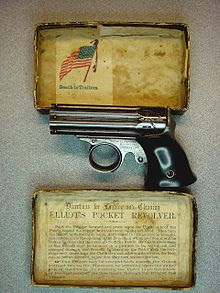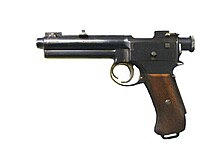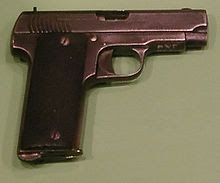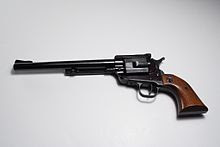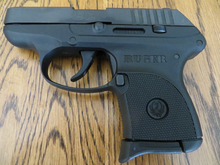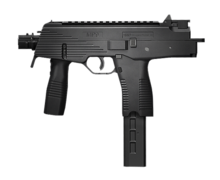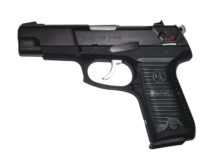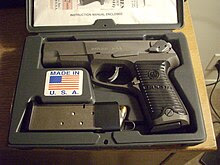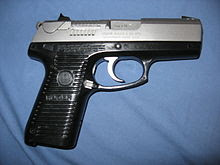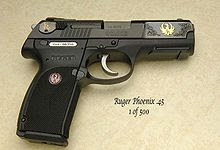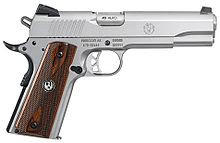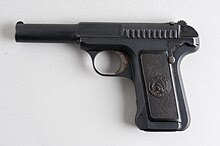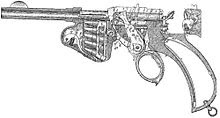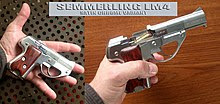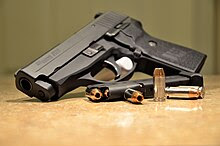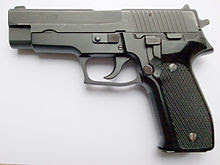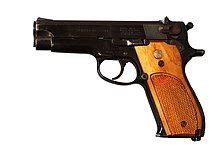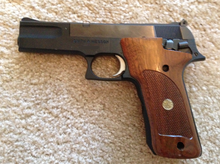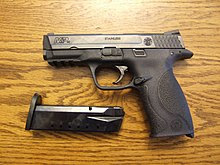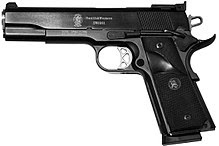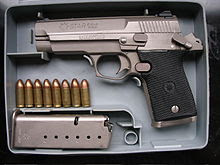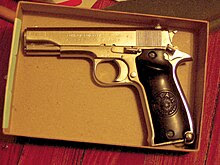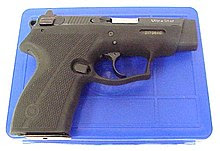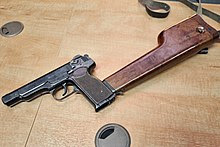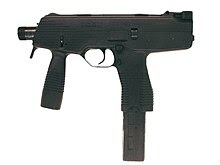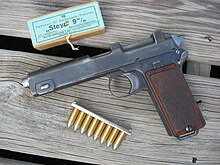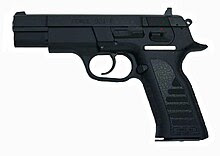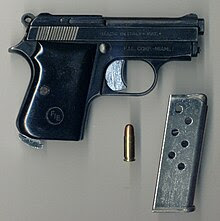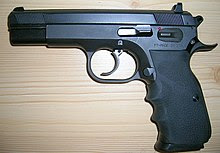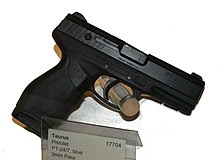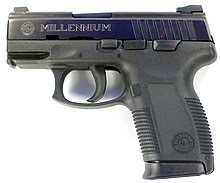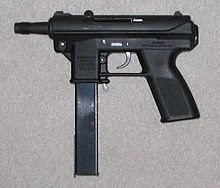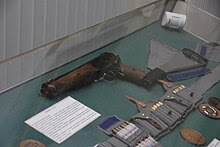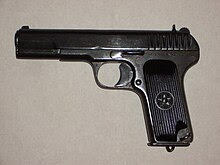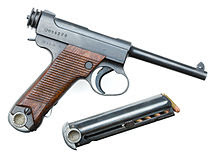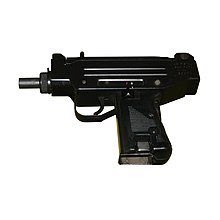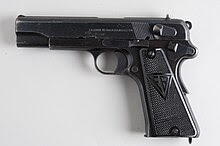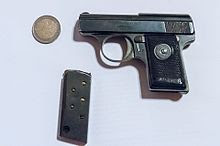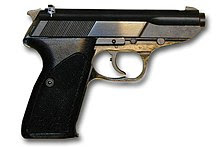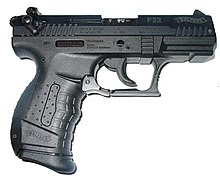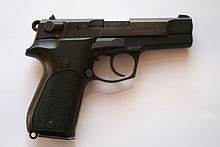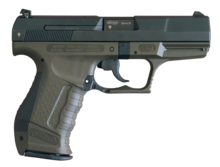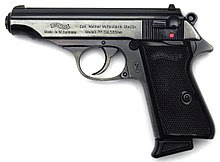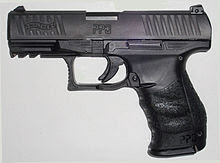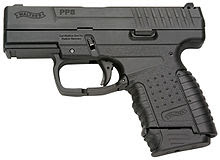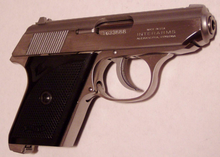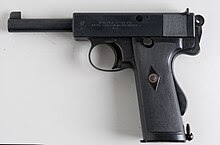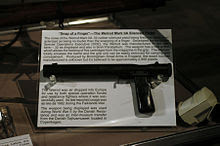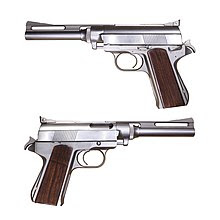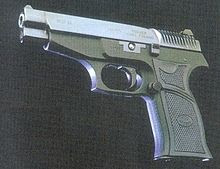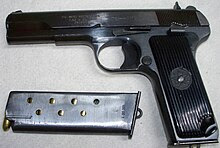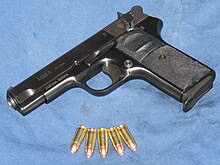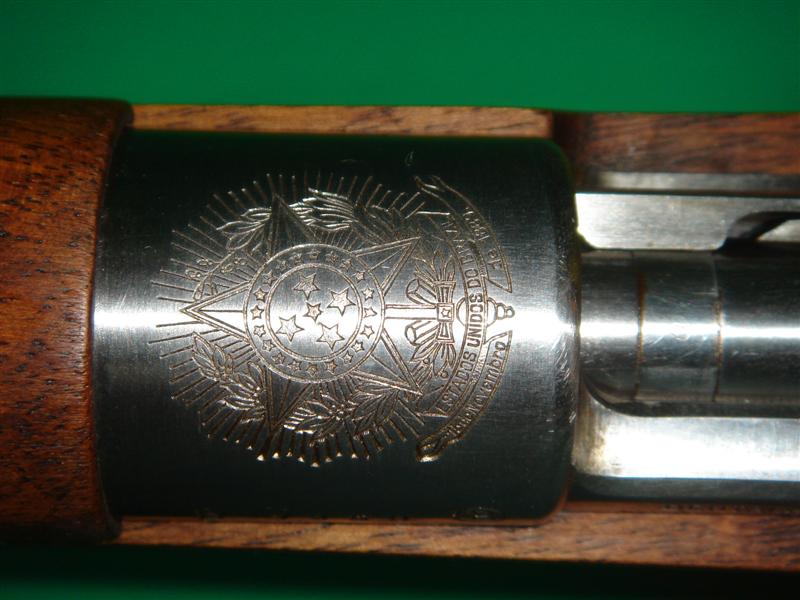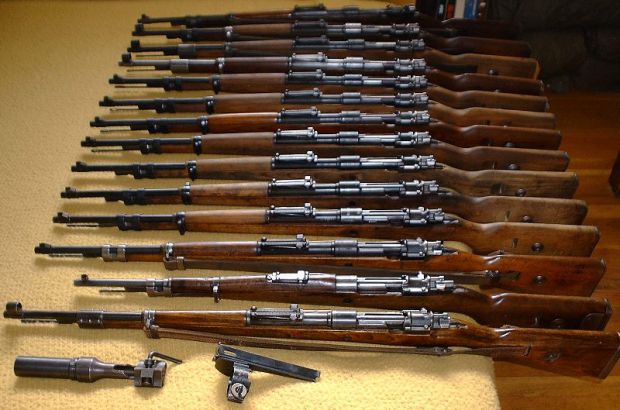
To all of my Wonderful readers of my Humble Blog. Thank you ever so much and I wish you a Great Weekend!
Grumpy
Here is a little reward for your Help and Loyalty. If at all possible, would maybe give the Old Frat a couple of pennies ?
Yes I am shameless!
Here is your reward for today from Grumpy!































A partial list of pistols
See also[edit]
|
Oregon’s Only No Compromise Gun Rights Organization |
| 12.06.17
Today the “National Reciprocity Act” passed the US House on a 231-198 vote.
While national reciprocity would be a good thing for gun owners, and override Oregon’s ridiculous refusal to recognize a single other state’sconcealed handgun license, the bill was coupled with terrible legislation dubbed “Fix NICS”.
Unfortunately “Fix NICS” vastly expands the flawed and failed Brady background check law and will no doubt ensnare many more people who will be denied their right to purchase a firearm as a result of faulty background checks.
“Fix NICS” was supported by anti-gun organizations as well as NRA and National Shooting Sports Foundation, always a troubling alliance.
Ultimately no amount of legislation is going to change the fact that human error is responsible for the mess that the background check system is.
Now many people who are in no way dangerous or “criminal” are going to be added to the list of prohibited people. Nothing in the legislation provides any recourse for persons falsely denied.
The bill faces a very uncertain future in the Senate where it is quite possible that the reciprocity language could be stripped out leaving us with only more gun control.
It that happens, when the bill goes back to the House, the supporters of reciprocity will have a hard time opposing the new gun control they voted for.
|
Eastern Coyote Hunting Playbook

You probably don’t know Tim Eaton. He’s a Kentucky preacher who can skin a buck, call a turkey, catch a bass, and hold his own in just about any outdoor pursuit you care to name.
But to people in these parts, he’s best known as a coyote hunter. He shoots 30 to 40 big eastern dogs each winter using nothing but his hand calls and an old Savage rifle.
After hunting with him last year, I learned that his success comes from following a few fundamental rules.
1. Be Persistent Most eastern coyote hunters are all too familiar with the sting of defeat. Eaton and I hunted a full week last February before we shot a coyote. In this part of the world, that’s not terribly unusual—though admittedly, we had tougher-than-normal conditions. If you want to be a coyote hunter in the East, you have to persevere through the dead sets.
 2. Play the Wind “The most critical thing for the setup, in my mind, is the wind,” Eaton says. “I may know there is a coyote there, but if the wind isn’t right when I’m planning to hunt, I’m just not going to go in. Ninety percent of the time, that dog is going to smell you before you see it. It’s just as important to play the wind getting to where you want to hunt, too. If the wind is carrying your scent toward them, they’re already gone before you make the first sound.”
2. Play the Wind “The most critical thing for the setup, in my mind, is the wind,” Eaton says. “I may know there is a coyote there, but if the wind isn’t right when I’m planning to hunt, I’m just not going to go in. Ninety percent of the time, that dog is going to smell you before you see it. It’s just as important to play the wind getting to where you want to hunt, too. If the wind is carrying your scent toward them, they’re already gone before you make the first sound.”
3. Be Ready for Warm Weather In the Southeast, 50-degree-plus days are common throughout the wintertime. That makes the hunting tougher—but it doesn’t mean you shouldn’t go. “They don’t usually move as late when it’s warm,” Eaton says. “And generally, they’ll bed up on thicket edges where they can catch a good breeze and lay in the shade. The opposite is true on really cold days. Coyotes will bed deeper in cover, out of the wind.”
4. Respect the Setup Many eastern hunters miss seeing responding coyotes due to the rolling terrain and dense cover. “It’s good to know how your land lays. Knowing what is within a half mile of you will help determine from what direction those dogs are going to approach you,” Eaton says. He suggests setting up within 400 to 500 yards of a suspected coyote bed. Get too close and you risk bumping dogs. Set up too far away and they’ll never commit. He also encourages in-depth analysis of the terrain before making the first calls. “If you don’t set up to where you can see over a break or down each side of a point, coyotes will come in and you’ll lose them, with no idea where they’ll pop up at,” Eaton says.
5. Sound Scared Eaton uses distress calls 95 percent of the time, but he does change up his sounds. “Generally, I’ll start out soft and then work my way up in volume from there,” he says. “I call in 30- to 60-second sequences. After eight or 10 minutes, I’ll go to a much louder call. You can change the pitch by where you’re at on the reed, and the volume by the length of the horn (your hand positioning) on the call.”
6. Get Ground Eastern hunters deal with fewer coyotes, smaller properties, more hunting pressure, and tougher terrain than western hunters. Because of that, to stay persistent and follow rule No. 1, you need plenty of ground to hunt. “Having access to a lot of land is a great benefit because you can’t go into the same territory day after day or week after week,” Eaton says. Fortunately, it’s usually easy to get predator-hunting access. “Many property owners and farmers won’t let you in during deer or turkey season, but they will let you hunt coyotes at other times of the year,” he says. “Take care of the land and treat the property owners right. Do that, and most of them will let you come in and coyote hunt.”
When you really want to send a message. Then use the 300 Win magnum round down range!
































The battleships of Pearl Harbor
The USS California
 USS Oklahoma
USS Oklahoma
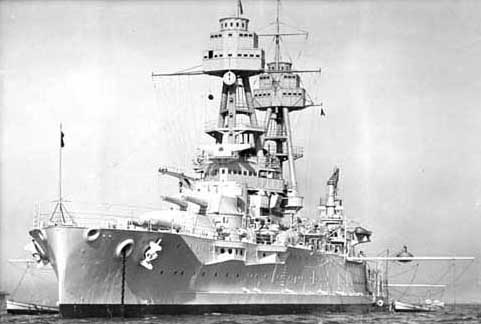
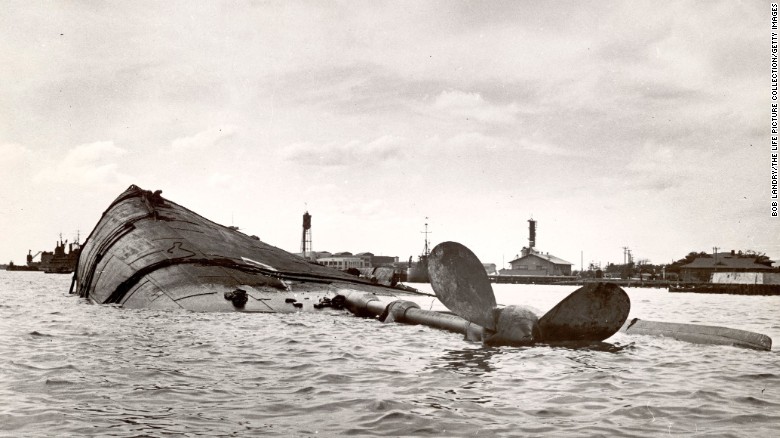
The USS Arizona
 USS Nevada
USS Nevada


USS West Virginia

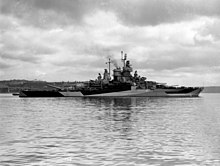
USS Tennessee

USS Maryland


USS Pennsylvania

And here is what it got the Empire of Japan in the long run.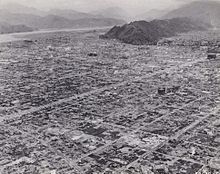 This was a major city in Japan in 1945
This was a major city in Japan in 1945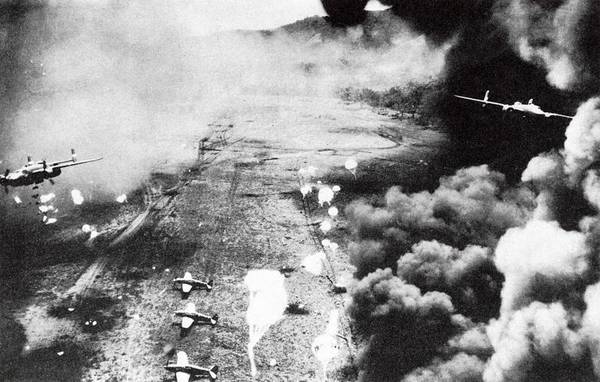
Ditto
I also found this and thought it was interesting. It is an Air Force Map of Cities in Japan that we wiped off the face of the earth. Let us hope that stuff never happens again!
It is an Air Force Map of Cities in Japan that we wiped off the face of the earth. Let us hope that stuff never happens again!

When the bloody tide of communism started rolling across the Black Continent in the 1960’s, the Western world preferred to sit and watch, or even assist it. The astute few, however, quickly realized that this seemingly chaotic surge had a clear purpose: to drive the white man out of Africa and make it a foothold of third world hordes. And even though the white man was greatly outnumbered, with hands tied by political treachery and cowardice, there still were plenty who stood and fought in an epic struggle that continues to this day.
The Warning Shot

After major colonial powers’ withdrew from Africa, the only white players left were Portugal, Rhodesia and South Africa. Made complacent by years of peace and comfort, Portuguese colonial administration could do little to stop Angola and Mozambique from rapidly corkscrewing into oblivion; toppling of Salazar’s regime in Portugal by communists simply delivered the coup de grace. Mozambique became a typical African dictatorship, while Angola was split between three armed groups: MPLA, UNITA and FNLA.
South Africa, realizing it was next on the menu, started supporting UNITA and especially FNLA against MPLA, which was heavily backed by USSR and especially Cuba. Unfortunately, MPLA still managed to assume power in Angola, and it was not long before it found a new target: South West Africa, a mineral-rich protectorate of South Africa.
The South West African People’s Organisation (SWAPO), initially the runt of the Afro-Marxist litter that survived on meager handouts from the Eastern Bloc and treasonous Western governments, started gradually gaining power. In 1972, political opossums in the UN granted it recognition and in 1976, MPLA allowed SWAPO to use its bases in southern Angola as staging grounds for incursions into South West Africa.
Modus operandi of SWAPO wasn’t any different from other black-and-red terrorist groups of their time: infiltrate a remote farming area across the border, murder any whites encountered, torch a farm or two and run back. Arn Durand’s autobiography sums them up perfectly:
Fill your head with Marxist communist ideologies. Pick up an RPG-7, an AK-47 and some landmines and hand grenades, put on a Cuban or Chinese camouflage uniform and march across the border of another country. Shoot and kill the locals who don’t support your ideas. Abduct the schoolchildren at gunpoint, march them to your training bases to indoctrinate them and fill their heads with your bullshit to force them to do what you are doing. You’re looking for shit and you’re bound to get your head blown off and those crap ideas spilt out all over the fine white sand.
– “Zulu Zulu Golf”, 2011
Ovamboland, the northernmost part of South West Africa, rapidly became a battlefield, with its native Ovambo tribe splitting into anti- and pro-SWAPO factions – the former determined to maintain the comfortable status quo under an administration loyal to South Africa, the latter intending to help drive the whites out of “Namibia” and seize power over it.
Ops K
South Africa reacted quickly, dispatching its army to guard the Angolan-SWA border. But SADF, despite being very adept at conventional warfare, lacked the flexibility needed to intercept SWAPO raiding parties, not to mention that at the time it was not allowed to cross the Angolan border. Invading guerrillas could only be tackled by something much swifter and far less hierarchical than the army – something that South Africa did not have.

Securing the full length of the Angolan-SWA border required tens of thousands of troops.
The solution came in 1978, with arrival of Johannes “Sterk Hans” Dreyer, a South African Police brigadier, in the area of operations. Having served in Rhodesia in the period when SAP assisted it with counter-insurgency efforts, he knew how the country’s most fearsome military unit, the Selous Scouts, operated. While recognizing the usefulness of local population for intelligence gathering, he dismissed the Scouts’ infiltration tactics as unsuitable for the flat, nearly featureless landscape of Ovamboland.
Instead, he opted for a highly mobile hunter-killer unit that would track and pursue guerrillas across immense distances. Operating on a shoestring budget, Dreyer managed to recruit 60 Ovambos and 6 white police officers to man two pickups and two cars, arming them with trophy weapons. His detractors were in stitches over this ragtag outfit, but quickly went silent when in 1979, after seven days of pursuit, it intercepted a terrorist warband, killing two. This was soon followed by another long chase and more dead terrorists; in less than a year, Dreyer’s men were killing 50 to 80 SWAPO per month.

Johannes Dreyer, founder and father figure of Koevoet
But the unit’s official recognition was still far away; until then, “Ops K” sustained itself in any way it could, including by stealing supplies and equipment from military bases. Moreover, the unit’s classified status meant that all their kills were credited to the army; these two circumstances paved the way to mutual resentment that sometimes bordered on open hostility. Three years later, Dreyer went to the higher-ups with statistics. Despite the massive military presence at the Angolan border, Ops K had more enemy contacts and kills than all of the deployed units combined. Backed into a corner by undeniable facts, the MoD finally started coughing up money.
The Crowbar
The first sign of the government’s goodwill was a batch of Hippo APCs, intended to counter SWAPO’s copious use of landmines. Dreyer’s men showed their gratitude in a very unorthodox way – by using arc welders and angle grinders to make Hippos open-topped, add gunports, and install weapon mounts that could accommodate even 20mm cannons. Engineers back in SA were horrified, but later ended up incorporating the modifications into new MRAP vehicles: the Army got the Buffel, while Koevoet, as Ops K came to be known, got the Casspir.

This machine pretty much defined the unit’s tactics. Koevoet was split into battlegroups, each comprised of approximately 40 Ovambos, 4 whites, 4 Casspirs bristling with weapons and a Blesbok supply vehicle. The groups patrolled the bush in week-long shifts, visiting villages and inquiring about SWAPO sightings. The moment spoor was picked up, the hunt was on: Ovambos would run in front, pointing out the spoor with long sticks, with Casspirs following closely behind, gunners on top watching for ambushes.
When the enemy was close but not yet visible, a Casspir or two would often leap-frog ahead of the main group in order to prevent them from scattering or cut off a possible escape route. The moment a contact was made, trackers would hit the ground while Casspirs rushed in, encircling the enemy in a hail of gunfire and bursts of white phosphorus grenades. In case of casualties or overwhelming enemy presence, helicopters would be scrambled from a nearby airfield, providing additional firepower and vision; Koevoet’s relationship with the Air Force was far more amiable than with the Army.
Even by African standards, Koevoet was an anomaly. If carrying out military operations as a desegregated police unit in an apartheid state was not enough, the unorthodox tactic they employed put them at extreme risk. Casspirs, while bullet- and mine-proof, offered no protection from RPGs, and their open-topped design made gunners very vulnerable during contacts, while trackers were not protected at all.
Koevoet frequently disregarded the army’s combat zone designations, which resulted in several friendly fire incidents. Another distinguishing feature was the bounty system – the unit was compensated for every killed and captured terrorist, as well as their weapons and equipment, leading to cutthroat competition between battlegroups.
Koevoet also engaged in an improvised hearts-and-minds campaign by treating local natives with great cordiality and protecting them from SWAPO raids; this sharply contrasted with their habit of decorating bumpers and wheels of their Casspirs with corpses as a warning to SWAPO sympathizers. Some Koevoet trackers were ex-SWAPO themselves: similarly to the Selous Scouts, particularly skilled captives were offered to join the battlegroups, while others were gainfully employed as farm workers and cooks. Most of the fighting, however, was still done by whites, as many Ovambos refused to or were simply afraid to participate in contacts.
Fear Incarnate

Each Koevoet Casspir was an arsenal on wheels.
Resourcefulness and sheer brutality of the new unit paid off: despite constant attempts by SWAPO to terrorize South West Africa’s population, very few succeeded and none were left unavenged. The full list of Koevoet operations is far too long to provide here (especially considering that most started as routine patrols), but it is crowned by their defense of Tsumeb, when over 150 SWAPO on their way to a small mining town were intercepted, dispersed and annihilated by several battlegroups before the Army even started to react. The few captives later confessed to being ordered to burn Tsumeb to the ground.
In its prime, SWAPO was a force to be reckoned with. Armed by Soviets, trained by Cubans and brainwashed into extreme bloodthirst, they were a formidable foe even for SADF, one of the most capable armies in the world. And yet, Koevoet did not even bother with posting sentries during their overnight camps in the bush – their reputation did the job just as well.
For SWAPO, the South African Army represented pure evil, but it was a familiar, comprehensible evil. However, hearing the unmistakable roar of a Casspir’s engine and catching a glimpse of a Koevoet constable’s olive uniform was often all it took for a trained guerrilla to panic and flee. Not even 32 Battalion instilled such dread – the idea of an enemy that chases you until you drop dead was far more terrifying than any ambush, and mercy was not guaranteed even in case of surrender.
After South Africa told the UN to scram and allowed its troops to cross into Angola, syringes with benzedrine became standard issue for terrorists, whose survival now hinged on beating Koevoet to their bases deep within Angola rather than just the border. Few ever succeeded – Ovambos’ tracking skills, which they learned from early childhood as herdboys, bordered on supernatural, and Casspirs were never far behind.
The facts speak for themselves: 11 years, 1615 contacts with the enemy, 3681 terrorists killed and captured, 153 constables dead and 949 wounded. That’s a 25:1 kill ratio, compared to the SADF average of 11:1, not to mention that total number of Koevoet staff never exceeded 1000.
The Final Look

Koevoet veterans gather to pay respects to their fallen comrades-in-arms. Pretoria, 2013.
For an outsider, Koevoet were barbarians – grubby, bellicose and completely ruthless. Apartheid South Africa was the favorite boogieman of both communist East and subverted West; once existence of Koevoet was revealed, it also became a target. The very people who bled to ensure that population of South West Africa slept tight at night were described as depraved butchers by politicians and journalists who never stepped foot outside their sterile offices.
Koevoet was disbanded in 1989, its veterans either finding new occupations or becoming scattered across the world as private security contractors. Contemporary governments of Namibia and South Africa prefer to ignore them altogether – given the African tradition of exterminating all opposition, it could be worse.
The outcome of the Border War itself remains unclear: while South Africa failed to retain South West Africa, it bled SWAPO into total impotence, preventing them from establishing yet another bloody dictatorship and forcing them to adhere to more or less democratic means of maintaining power. Modern Namibia owes its peace and stability to Koevoet, SADF and sacrifices they made back in the day, no matter how hard its government tries to deny it.
Some other information about these folks:
Koevoet
| Koevoet Operation K Police Counter-Insurgency Unit |
|
 Koevoet Memorial at the Voortrekker Monument, Pretoria |
|
| Agency overview | |
|---|---|
| Formed | January 1979 |
| Preceding agency |
|
| Dissolved | November 1989 |
| Superseding agency | |
| Type | Paramilitary |
| Jurisdiction | |
| Headquarters | Oshakati, Oshana Region |
| Employees | 1,000 (c. 1985) |
| Ministers responsible | |
| Agency executive |
|
| Parent agency | |
The Koevoet ([ˈkufut], translated to crowbar, abbreviated Operation K or SWAPOL-COIN) was a major paramilitary police organisation under South African-administered South West Africa, now the Republic of Namibia.
It was an active belligerent in the Namibian War of Independence from 1979 to 1990 – “Crowbar” being a popular allusion to successful attempts at prying insurgents from the local population.[1]
Created by South African Police Brigadier Hans Dreyer, a veteran of the Rhodesian Bush War, the unit’s initial directive was to conduct internal reconnaissance.[2]
Koevoet quickly became one of the most effective combat forces deployed against the South West African People’s Organization (SWAPO) during the war.[3][4]
Consisting of some 250 white and 800 black Ovambo operators, it has also been held responsible for committing human rights violationsagainst civilians.[5]
After killing or capturing some 3,225 guerrillas and fighting an estimated 1,615 engagements,[6] Koevoet, along with the South West Africa Police, was disbanded in Namibia after 1989.[5]
Contents
[hide]
History[edit]
International background[edit]
At the end of World War I, the former German South West Africa was granted to South Africa as a mandated territorythrough the League of Nations.
By the 1960s, however, much of Africa was embroiled in a struggle for independence from colonial powers such as Belgium, Great Britain, France, and Portugal.
In the southern subcontinent, where many indigenous tribes had been pushed off their lands by settled Europeans, the political situation was particularly explosive.[7]
Then governed by its apartheid administration, South Africa watched with concern as low intensity conflicts and guerrilla warfare in neighbouring countries ousted traditional white regimes, often replacing them with Marxist-oriented single party states such as those in Zambia, Angola, and Zimbabwe (formerly Rhodesia).[7][8]
Determined to prevent South West Africa from following this example, South African authorities stepped up their efforts to retain control over their protectorate.
When the League of Nations was dissolved with World War II and replaced by the United Nations in 1945, Pretoria refused to recognise the new Trusteeship Council for mandates. Instead, Jan Christiaan Smuts‘ administration insisted on the right to annexation.
In 1950, the UN confirmed that South Africa’s legal administration was still in force and that it could not compel the latter to open a new trusteeship agreement.[7]
Even after the General Assembly assumed its powers as successor to the League and revoked the mandate in 1966, South West Africa remained a de facto “fifth province” of its larger neighbour.[5][9]
The war begins[edit]
The Namibian Independence War initiated when the South West African People’s Organization commenced its armed struggle against what it termed an illegal occupation of South West Africa.[10]
Disappointed that the UN had failed to take executive action to ensure independence, SWAPO, a prominent independentist group, declared from its Tanzania offices that “We have no alternative but to rise in arms and bring about our liberation.”[7]
This did not come as a surprise to many observers, who pointed out that as early as 1962 the party had already announced that violence was necessary as part of an overall strategy seeking change – a decision which allowed authorities to brand known members as terrorists.[5]
On 26 August 1966, the first military engagement was fought when armed guerrillas clashed with the South African Policein Ovamboland.
A month later, a second SWAPO raid was attempted on a major administrative complex in Oshikango.[7]
South Africa soon found herself confronted with frequent attacks on tribal heads, government installations, and Grootfontein farming regions – the last of these targets in particular caused consternation among white South West Africans.[7]
By 1971, the International Court of Justice had ruled South Africa’s occupation of South West Africa to be illegal under international law.[11]
At this point, SWAPO was the most effective nationalist group in the territory. It enjoyed thorough support from South West Africa’s largest tribe, the Ovambo, and partisans active with its military wing (self-styled the “People’s Liberation Army Namibia“) were often indistinguishable from the local population.[5]
From the South African perspective, combating PLAN was part of a counter-terrorist initiative against those who were viewed as pawns of international communism.[12]
However, the world community increasingly took the opinion that the conflict was a legitimate bid for national liberation; UN officials unilaterally recognised SWAPO as the “sole authentic representative of the Namibian people” and “the future government of Namibia”.[8]
Atrocities were already being charged by both sides, with Pretoria condemning SWAPO’s systematic attacks on basic infrastructure and indiscriminate use of land mines.
The latter retaliated in 1973 by drawing attention to the mistreatment of nationalists in military detention.[12]
Fierce fighting eventually drove ten percent of South West Africa’s population into exile; 69,000 citizens crossed the border into Angolan territory, while another 5,000 fled to Zambia.
Among these refugees were potential SWAPO recruits who subsequently sought insurgent training in Arab Africa, the Soviet Union, China, or North Korea.[5]
By the late 1970s, contacts between SWAPO and the South African Defence Force averaged one per day; over 900 clashes with nationalist guerrillas were being reported each year.[5]
Successful anti-colonial wars elsewhere also had a direct impact on events in South West Africa.[5] Victorious liberation movements in Mozambique, Zimbabwe, and Angola offered varying degrees of material support for SWAPO.
The new Angolan regime in particular proved an active benefactor, and permitted PLAN to operate from within their national boundaries.[13][14]
Deadlier escalation followed in 1978 when the SADF began crossing into Angola to strike at SWAPO positions; such actions were justified as necessary to prevent would-be ‘freedom fighters’ from infiltrating south into Ovamboland.[
60,000 South African soldiers were deployed to the operational area,[7] and defence costs spiraled upwards – eventually consuming a solid ten percent of Pretoria’s total expenditure.
PLAN responded by deploying increasingly sophisticated weaponry, including rockets, mortars, and an anti-aircraft arsenal of Soviet origin.[5][15]
Formation of Koevoet[edit]
In 1979, South African authorities began looking to recruit South West Africans for their war effort.
The addition of indigenous personnel, it was believed, would sow divisions among the territory’s populace, reduce SADF casualty rates, create the impression of a civil war rather than an anti-colonial struggle, and alleviate a growing manpower shortage.[16]
The creation of the South West African Territorial Force (SWATF) for local conscription was an excellent interim measure, but Defence Minister Magnus Malan also recognised the need for an intelligence-gathering unit similar to Rhodesia‘s Selous Scouts – a multiracial entity which had already demonstrated how small gangs of “pseudo terrorists”, trained to exceptionally high levels of subterfuge, could have an effect utterly disproportionate to their size.
Colonel Hans Dreyer, a former brigadier from the South African Police (SAP) division in Natal Province, was appointed to form the new unit accordingly. As a veteran of the Rhodesian Bush War.
Dreyer was more than familiar with the techniques employed by the Selous Scouts and applied hard lessons learned from that conflict.[18]
Since the passage of United Nations Security Council Resolution 435 called for an end to South Africa’s military buildup but conceded that police units were necessary to maintain order during Namibia’s hypothetical elections and the proposed transition to independence.
Koevoet was designated a strictly police element.[16] Its initial members included sixty Ovambo trackers and ten white constables, many of whom had undergone prior training with the Special Task Force (Taakmag).
Even at its peak, Koevoet numbered no more than 3,000 field and support staff, including a core of senior officers recruited from South African law enforcement or the expiring Rhodesian Security Forces.
Angolan irregulars from the National Liberation Front of Angola (FNLA) were also known to have served, along with former SWAPO supporters, known as “turned terrs”, bribed or coerced into joining.
Throughout its brief history the unit remained predominantly black and Oshiwambo speaking.[16] The SAP would not publicly acknowledge its existence until mid 1980, when a religious tabloid remarked on the use of a new special forces group linked to the assassination of known SWAPO sympathisers in Ovamboland.
The editorial named fifty persons on Colonel Dreyer’s alleged “death list”; although South Africa denied the report, officials did name Koevoet and praise it for its efficiency.[16]
| “ | The crowbar, which prises terrorists out of the bushveld like nails from rotten wood. | ” |
- South African Minister of Law and Order Louis le Grange, on Koevoet activities in the operational area.[19]
In court cases involving subsequent constables, the SAP disclosed that Koevoet had access to uniforms and arms similar to those furbished for SWAPO by the Soviet bloc, allowing members to actually impersonate guerrillas à la the Selous Scouts.
If civilians welcomed the imposters, they were interrogated.[18] Other patrols scoured known infiltration routes in mine-protected Casspir armoured personnel carriers, tirelessly tracking their quarries for weeks on end.[20]
According to the South West African authorities, in 1981 alone five hundred rebel operatives were killed or arrested by the paramilitary at the cost of only twelve men. By 1984, search and destroy combat operations had taken precedence over intelligence gathering.[21]
A large part of Koevoet’s later work included APC patrols into guerrilla-held areas. Sometimes mortar attacks were carried out on guerrilla camps, followed by armoured assaults.
If necessary, a number of the operators would later dismount and pursue the enemy with small arms. Skilled trackers drawn from the local population were also hired to hunt down fugitives sought by the police.
Clashes between SWAPO and Koevoet became increasingly costly and fierce; in 1989 official estimates suggested that over three thousand guerrilla fighters were being killed or captured each year by the one unit alone.
Their use of torture and assassination, however, proved to be their undoing; SWAPO compiled a list of atrocities committed by Koevoet which was promptly released to the international press.
Even the South African government finally bowed to pressure and tried several operators for murder. In 1985 heavily armed Koevoet squads indiscriminately opened fire on anti-apartheid protestors in Windhoek.[citation needed]
Structure[edit]
Koevoet was a +-1000-man force consisting of about 900 Ovambo and about 300 white officers and SAP non-commissioned officers (NCOs).
It was organized into 40 to 50-man platoons equipped largely with MRAPs called Casspirsand Wolf Turbos for conducting patrols, a Duiker fuel truck and a Blesbok supply vehicle (both variants of a Casspir). They rotated one week in the bush for one week at camp.
There were three Koevoet units based in Kaokoland, Kavango, and Ovambo with each unit over several platoons.
Koevoet’s internal structure was the brainchild of Hans Dreyer (later a Major-General in the SAP) to develop and exploit counter-insurgency intelligence.
The concept was originally modeled on the Portuguese Flechas and Rhodesia’s Selous Scouts.
By the mid-1980s, certain estimates put Koevoet’s size at over a thousand troops.[citation needed] The organization established its formal headquarters in the present day town of Oshakati, Namibia.
Training
The white officers were either South West African or South-African police officers and, as often as not, untrained for what were effectively military operations.
Accordingly, these officers were usually sent for additional training with South African Special Forces Brigade in bushcraft, tracking and small arms handling and tactics.
The Ovambo and Bushman trackers were rated as Special Constables, who essentially underwent intensive basic infantry training although many were captured and “turned” SWAPO fighters that had already received training of a sort elsewhere.
From a Koevoet operator’s perspective, Special Constables were “Counter Insurgency” (COIN) (Afrikaans: Teen Insurgensie (TEIN)), while Koevoet operators were Koevoete (meaning plural of Koevoet) and had higher status than Special Constables.
The trackers of the unit in the early days were local Owambu and not Bushmen as often claimed, but operations were conducted with the bushman and junior recces “bat” units with success.
The Owambu, although accepting the skills of the bushmen, were in close competition and were in actual tracking and not just knowledgeable of the habits of the “tracked” equal.
Officers trained on the Galil as well as other weapons as well.
Tactics
Koevoet operatives learned many of their later tactics during service in the Rhodesian Bush War. A number of the men were originally sent as part of a South African support unit which trained under the British South Africa Police (BSAP) paramilitary.
It was because of this past association with the BSAP (Known as the “Black Boots” for their distinctly black footwear) that Koevoet would subsequently be referred to commonly as the “Green Boots”.
Several members of the former organization were later offered positions in Koevoet following the end of Rhodesia’s white minority rule.
Koevoet operations used highly mobile units that tracked groups of SWAPO fighters who were on foot. Their tracks were picked up in various ways, but most often from:[citation needed]
- Interrogation of PLAN fighters[22]
- Intimidation of local inhabitants
- Patrols of areas favoured for crossing by SWAPO fighters
- Following up after attacks carried out by SWAPO
Once a suspicious track was found, a vehicle would leap-frog ahead a few kilometres to check for the same tracks, and once found, the other vehicles would race up to join them.
Using this technique they could make quickly catch up with the guerrillas who were travelling on foot. The technique borrowed strongly from experience gained during the Rhodesian Bush War.
The trackers could provide accurate estimates on the distance to the enemy, the speed at which they were travelling and their states of mind.
They were able to do this by “reading” factors such as abandoned equipment, changes from walking to running speed, reduced attempts at anti-tracking or splintering into smaller groups taking different directions (“bomb shelling”).[23]
Once the trackers sensed that the SWAPO fighters were close, they would often call in close air support[24]and retreat to the safety of the Casspir armoured personnel carriers to face an enemy typically armed with RPG-7 rocket launchers, rifle grenades, AK-47s, SKS carbines, mines and RPK and PKM machine guns.
Koevoet members were financially rewarded through a bounty system, which paid them for kills, prisoners and equipment they captured.
This practice allowed many of the members to earn significantly more than their normal salary, and resulted in competition between units.[25]
It also resulted in a complaints being raised by the Red Cross about the disproportionately low number of prisoners taken, and accusations of summary executions of prisoners.[26]
Former SADF generals like Constand Viljoen and Jan Geldenhuys were very critical of Koevoet’s activities, considering them cruel and crude,[27] and undermining of the army’s “hearts and minds” campaign.[21]
Disbandment
SWAPO’s accusations that Koevoet had conducted intimidation of voters during registration for the election was taken up by the United Nations.
Consequently, in October 1989, Koevoet was disbanded so that SWAPO could not accuse South Africa of influencing the election.[28]
Its members were incorporated nationwide into the South West African Police(SWAPOL). A notable percentage of operators were also known to have taken up work with the South West Africa Territorial Force.
The Koevoet issue was one of the most difficult the United Nations Transition Assistance Group (UNTAG) had to face. Because the unit was formed after the adoption of United Nations Security Council Resolution 435 of 1978 (calling for South Africa’s immediate withdrawal from Namibia), it was not mentioned in the eventual settlement proposal or related documents.
Once Koevoet’s role became clear, the UN Secretary-General took the position that it was a paramilitary unit and, as such, should be disbanded as soon as the settlement proposal took effect.
About 2,000 of its members had been absorbed into SWAPOL before the implementation date of 1 April 1989 but they reverted to their former role against the SWAPO insurgents in the “events” of early April 1989.
Although ostensibly re-incorporated into SWAPOL in mid-May, the ex-Koevoet personnel continued to operate as a counter-insurgency unit travelling around the north in armoured and heavily armed convoys.[29]
In June 1989, the UN Special Representative in Namibia and head of UNTAG, Martti Ahtisaari, told the Administrator-General (South African appointee Louis Pienaar) that this behaviour was inconsistent with the settlement proposal, which required the police to be lightly armed.
Some Koevoet operators later maintained that where the SWAPOL-COIN police forces were weakened in order to meet the demand set by the proposal document, SWAPO had not yet relinquished its position and capabilities as an armed insurgent force, thus necessitating their cautious defiance.
The vast majority of the ex-Koevoet personnel were quite unsuited for continued employment in Namibian law enforcement and, if the issue was not dealt with soon, Ahtisaari threatened to dismiss Pienaar.
Ahtisaari’s tough stance in respect of these continuing Koevoet operations made him a target of the South African Civil Cooperation Bureau.
According to a hearing in September 2000 of the Truth and Reconciliation Commission, two CCB operatives (Kobus le Roux and Ferdinand Barnard) were tasked to give the UNTAG leader a “good hiding”.
To carry out the assault, Barnard had planned to use the grip handle of a metal saw as a knuckleduster. In the event, Ahtisaari did not attend the meeting at the Keetmanshoop Hotel, where Le Roux and Barnard were lying in wait for him, and thus escaped injury.[30]
There ensued a difficult process of negotiation with the South African government which continued for several months.
The UN Secretary-General pressed for the removal of all ex-Koevoet elements from SWAPOL, with Ahtisaari bringing to Pienaar’s attention many allegations of misconduct by them. UN Secretary-General Javier Pérez de Cuéllar visited Namibia in July 1989, following which the UN Security Council demanded that Koevoet formally disarm and the dismantle its command structure.
Under such pressure, the South African foreign minister, Pik Botha, announced on 28 September 1989 that some 1,200 ex-Koevoet members of SWAPOL would be demobilized the next day.
A further 400 such personnel were demobilized on 30 October – both events were supervised by UNTAG military monitors.[31]
The Truth and Reconciliation Commission was highly critical of Koevoet’s practices.
In its final report, the Commission concluded that the unit was “responsible for the perpetration of gross human rights violations in South West Africa and Angola”, and that “these violations amounted to a systematic pattern of abuse which entailed deliberate planning by the leadership of the SAP”.[32]
See also
- Eugene de Kock, notable former Koevoet operator
- Flechas
- Executive Outcomes
- Angolan Civil War
- South African Border War
- 32 Battalion
Further reading[edit]
- Vanneman, Peter (1990). Soviet Strategy in Southern Africa: Gorbachev’s Pragmatic Approach. Hoover Press Publications. ISBN 0-8179-8901-3.
- Hooper, Jim (1988). Koevoet. Southern Book Publishers. ISBN 1-86812-167-4.
- Kamongo, Sisingi; Bezuidenhout, Leon (2011). Shadows in the Sand: A Koevoet Tracker’s Story of an Insurgency War. International Pub Marketing. p. 293. ISBN 0-620-47479-3.
- Stiff, P. The Covert War: Koevoet Operations in Namibia 1979-1989, Galago Publishing Pty Ltd, 2000. ISBN 1-919854-03-7
- Zhu, Yunxia; Hearn, Roger (1999). “§5: Violence and Intimidation in Namibia”. UN Peacekeeping in Action: The Namibian Experience. Nova Publishers. ISBN 1-56072-653-9.
Footnotes[edit]
- Jump up^ Hooper 1988, p. 232.
- Jump up^ Simon Chesterman. Civilians in War (2001 ed.). International Peace Academy. pp. 27–29. ISBN 978-1-77007-328-9.
- Jump up^ Venter 1994, p. 127-168.
- Jump up^ Turner 1988.
- ^ Jump up to:a b c d e f g h i Green, Sparks. Namibia: The Nation After Independence. pp. 1–134.
- Jump up^ De Wet Potgieter. Total Onslaught: Apartheid’s Dirty Tricks Exposed (2007 ed.). Zebra Press. p. 5. ISBN 978-1555879884.
- ^ Jump up to:a b c d e f g Fryxell, Cole. To Be Born a Nation. pp. 1–200.
- ^ Jump up to:a b Thomas McGhee, Charles C.; N/A, N/A, eds. (1989). The plot against South Africa (2nd ed.). Pretoria: Varama Publishers. ISBN 0-620-14537-4.
- Jump up^ “Namibia: Apartheid, resistance and repression (1945-1966)”. Electoral Institute for the Sustainability of Democracy in Africa. August 2009. Retrieved 15 April 2011.
- Jump up^ Petronella Sibeene (17 April 2009). “Swapo Party Turns 49”. New Era. Archived from the original on 15 May 2011.
- Jump up^ “Legal Consequences for States of the Continued Presence Of South Africa In Namibia (South West Africa) Notwithstanding Security Council Resolution 276 (1970)” (PDF). International Court of Justice. 21 June 1971. Retrieved 20 April 2012.
- ^ Jump up to:a b c Forsythe, David. Encyclopedia of Human Rights. pp. 1–21.
- Jump up^ Bothma, Louis J (2006). Die Buffel Struikel: Die storie van 32 Bataljon en sy mense. LJ Bothma. p. 383. ISBN 0-620-37296-6.
- Jump up^ Kamongo, Sisingi (2011). Shadows in the Sand. 30 degrees south. p. 293. ISBN 0-620-47480-7.
- Jump up^ http://sadf.sentinelprojects.com/bg2/911text.html
- ^ Jump up to:a b c d Binaifer Nowrojee, Bronwen Manby. Accountability in Namibia: Human rights and the transition to democracy(2001 ed.). Human Rights Watch. pp. 17–20. ISBN 1-56432-117-7.
- Jump up^ O’Brien 2011, p. 104.
- ^ Jump up to:a b Tsokodayi, Cleophas Johannes. Namibia’s Independence Struggle: The Role of the United Nations. pp. 1–305.
- Jump up^ Chapter 2 – The State outside South Africa between 1960 and 1990
- Jump up^ David Lush. Last steps to Uhuru: an eye-witness account of Namibia’s transition to independence (1993 ed.). New Namibia Books. pp. 44–45. ISBN 978-9991631127.
- ^ Jump up to:a b O’Brien 2011, p. 105.
- Jump up^ Chesterman 2001, p. 27.
- Jump up^ Lord 2008, p. 252.
- Jump up^ Lord 2008, p. 247.
- Jump up^ TRC-Violations.
- Jump up^ TRC-1998, p. 70.
- Jump up^ Hamann 2001, p. 65-65.
- Jump up^ Wren 1989.
- Jump up^ Howard 2008, p. 76.
- Jump up^ CCB-2000.
- Jump up^ UNTAG.
- Jump up^ Truth and Reconciliation Commission of South Africa. Truth and Reconciliation Commission of South Africa Report Volume Two (PDF). Pretoria: Department of Justice and Constitutional Development. p. 76.
References[edit]
- “Koevoet Member Confesses to Commission”. Cape Town: SAPA. 23 July 1997. Retrieved 19 April 2012.
- “Sean Mark Callaghan Application for Amnesty”. Truth and Reconciliation Commission (South Africa). 29 January 2001. Retrieved 19 April 2012.
- Turner, John W. (1998). Continent Ablaze. The Insurgency Wars in Africa 1960 to the Present. Johannesburg: Jonathan Ball. ISBN 1-85409-128-X.
- Chesterman, Simon (2001). Civilians in War. Lynne Rienner Publishers. ISBN 1-55587-965-9.
- Venter, Al J (1994). The Chopper Boys. Helicopter Warfare in Africa. Gibraltar: Ashanti. ISBN 1-85367-177-0.
- Wren, Christopher S. (1 October 1989). “South Africa Disbands Special Police in Namibia”. New York Times. Retrieved 2007-10-24.
- “Targeted by the Civil Cooperation Bureau”. Truth and Reconciliation Commission (South Africa). 28 Sep 2000.
- Truth and Reconciliation Commission Human Rights Violations Health Sector Hearings (Truth and Reconciliation Commission 17 June 1997). Text
- “Namibia: UNTAG Background”. United Nations. 7 June 2001. Archived from the original on 29 August 2009.
- Howard, Lise Morjé (Spring 2002). “UN Peace Implementation in Namibia: The Causes of Success”. International Peacekeeping. 9(1).
- Hooper, Jim (1988). Koevoet!. Southern Book Publishers. ISBN 1-86812-167-4.
- Howard, Lise Morjé (2008). UN Peacekeeping in Civil Wars. Cambridge: Cambridge University Press. ISBN 978-0521707671.
- Lord, Dick (2008). From Fledgling To Eagle: The South African Air Force During the Border War. 30° South Publishers. ISBN 1-920143-30-0.
- Truth and Reconcilliation Commission of South Africa (PDF) (Report). Volume 2. 1998.
- Hamann, Hilton (2001). Days of the Generals. Zebra. ISBN 1-86872-340-2.
- O’Brien, Kevin A (2011). The South African Intelligence Services: From Apartheid to Democracy, 1948-2005. Taylor & Francis. ISBN 0-415-43397-5.

It use to be that these were not too hard and find.
But sadly the days when one would buy a gun and the Shop owner would point to a trash can full of Mausers and say.
“Throw in another $50 and you can choose one out of the lot”
Sadly are long gone. Oh well, nothing last forever, But there is always tomorrow!
Grumpy



